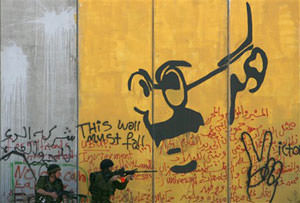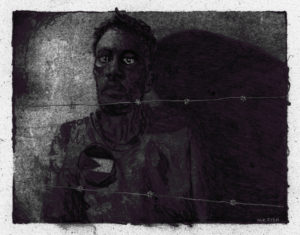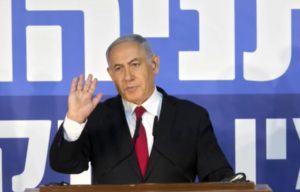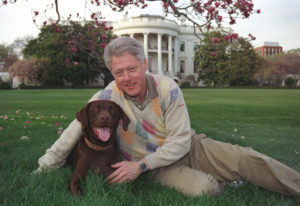Reflections on Israel: From Idealism to Ethnic Cleansing
When I was a youngster learning Jewish history in Jerusalem’s schools, the story was clear and even simple “A land without people for a people without land” Well, there are several striking problems with this aphorism.
In 1953 my family — my parents and their four boys, aged 4 to 12, I was 10 — moved from the suburbs of Washington, D.C., to Israel, where we remained for seven years. My father was what might be called a McCarthy refugee, a former Truman administration official who was also a “premature anti-fascist” (look it up) and thus not eminently employable in that chilly era of Red-hunting. I’ve since read my father’s FBI file and I know how close he came to being fingered as a former Communist Party member (my parents both left the CP after the 1939 Hitler-Stalin pact). My father received offers to join many other former government officials in taking overseas posts in such imperial outposts as Japan, Indonesia and Pakistan, but my mother said she wouldn’t raise her children in a “foreign nationals” bubble surrounded by servants. An offer to my father to join a group of economic advisers to the prime minister of the then 5-year-old state of Israel was another matter. To my mother, the daughter of longtime Labor Zionists, this was an appealing option, and we left the States for what was to be a two-year stint. After the two years were over, my father moved to the Hebrew University, where he taught for the next five years before we returned to the United States and I started college.
I’ve long thought that it wasn’t a bad bargain, missing out on the 1950s in the United States, by all accounts a very missable decade, and instead experiencing life in the young and then exciting and idealistic state of Israel. From the sixth grade through high school I went to Jerusalem schools, using Hebrew and absorbing a blend of nationalism and Jewish-slanted perspectives on history, within a context of widely proclaimed external threats and internal nation-building. This was a period in which education — history, geography and even Bible studies — was clearly in the service of the national enterprise. Even in the secular schools Bible study was required, but the subject largely was taught as an extension of the story of the Jews, reinforcing the connections of the Chosen People to the land, with the names of biblical places still present all around us, cementing the historical continuity we were now experiencing after 2,000 years of exile. As the familiar song went, we have come to the Land, to build and to be rebuilt in it.
Even then there were tangles in the stories that were woven through the nationalist tapestry: The barely disguised racism to which Sephardic Jews from the Arab countries were subjected, in comparison with the preferential treatment of Ashkenazi Jews from Western Europe and the United States — to my parents’ amusement, British and American Jews were routinely referred to as “Anglo-Saxons” — and the even less disguised racism directed at Arabs. Traveling with my father, whose advisory brief included public housing, to visit settlements for Sephardic immigrants — Maabarot — it was easy to see the contrast between the government’s views of various categories of olim (immigrants), and the vast difference in social services and opportunities extended. It was also easy to see that Israeli Arabs occupied a distinctly lower status.
At the same time, to be blunt, it was also clear to me that the beauty of the landscape and the indigenous architecture that seemed to grow organically on the rocky hills, a landscape and architecture that has etched itself on my soul, was the creation of the Palestinian people who had lived in these hills for generations. In contrast, the new settlements built by the Israeli government spread across the hilltops like an ugly ribbon of concrete.
The big city of the time, Tel Aviv, despite some neighborhoods with low-rise apartment buildings echoing the Bauhaus style, felt ugly and cramped and already was falling apart. Now, I know that Tel Aviv has been transformed, with skyscrapers and freeways, bright lights and nightlife, but it also looks like nearly every other modern metropolis. The adjacent Arab port of Jaffa, absorbed into a unified Tel Aviv-Yafo municipality, has been gentrified and touristed up.
The Jerusalem of my childhood was a divided city, in which the new part, the Israeli portion, was a small town I could traverse on my bicycle, avoiding the scar of barbed-wired “no man’s land” that divided it from the Jordanian-controlled Old City. Since 1967 the unified city, along with the extensive territories annexed into “Greater Jerusalem,” has grown and expanded and build up and out. High-rises have desecrated the timeless skyline of the city, as new housing settlements have covered the surrounding hills.
Even more striking than the sheer growth of the city is its domination by the ultra-orthodox. I recall the first riot I ever saw, in the mid-1950s, when thousands of black-suited men thronged the center of the city to protest the building of the first public swimming pool in Jerusalem. The pool was expected to permit men and women to swim at the same time, a provocation and blasphemy that roused the orthodox communities to outrage. Previously, the orthodox communities had limited themselves to barricading their streets during the Sabbath and throwing stones at cars that wandered too close to their neighborhoods. They also greeted other violations in similar fashion: I recall my mother being pelted with pebbles by small boys when she wore a sleeveless dress as we walked on a street that was the border between orthodox and secular neighborhoods. But the tensions of that time were nothing compared to the rise of religious nationalism after the 1967 Six Day War, when many ultra-orthodox groups previously hostile to Zionism — God will decide when we return to Zion, not men, they argued, and thus Zionism is presumptuous — took the Israeli victory as a sign that God now favored the Zionist enterprise, and therefore Jews had the right and indeed the obligation to settle the entire Land of Israel.Which brings me to the crux of the issue, the Palestinian Problem. When I was a youngster learning Jewish history in Jerusalem’s schools, the story was clear and even simple. In many ways, it could be encapsulated in a saying one heard occasionally, attributed to early Zionists: “A land without people for a people without land.” Well, there are several striking problems with this aphorism, the most obvious being that there were people already living in the Holy Land, the Palestinians. This phrase originated in writings of British clergy and statesmen who viewed with favor what later became the Zionist cause, decades before Theodor Herzl wrote “The Jewish State” (see the fascinating and important article by Diana Muir on the history of the phrase).
Not surprising for the people who retell the ancient story of liberation from slavery in Egypt every year at Passover, the official Zionist story was frequently retold. The story I was taught in school was repeated in the nearly obligatory youth movements that organized much of our out-of-school lives (the choice was between youth movements, each aligned with a political party; not belonging to any movement carried a sentence of total social isolation). This story was also repeated on the frequent occasions for public expression of nationalistic fervor (the Zionist leaders of the day were reminiscent of Fidel Castro in their love of delivering long speeches). It was the story of the return to The Land, the Rebuilding of the Land and the People, and the continuity of Jewish identification with the Land, from biblical times to the present. The Arab residents of the land — Palestinian was not a term used at that time, either by the Jews or, as far as I can recall, by the Arabs — were generally viewed as peasants, shopkeepers or craftsmen, living in the Levantine past, neither part of the romantic Hebrew past nor the modern new state being built around them.
Then there were the “infiltrators” — Arab peasants, taken from their refugee camps in Gaza or the West Bank, armed by the cynical Egyptians or Jordanians, and sent over the border to kill Israelis, unless, as usually happened, the Israelis killed them first. I well recall spending time with my high school class doing “national service” on a kibbutz near Gaza — helping out in the fields as replacement for kibbutzniks off on military service — when the army killed several infiltrators not far from where we were working. It was a familiar story that fit with the national narrative that blamed the neighboring Arab states for the plight of the Palestinian refugees kept confined in camps reminiscent of the Maabarot, in which the Israeli government settled immigrants from Arab countries. True, of course, the Egyptian, Jordanian and Lebanese governments were callous and calculating in their realpolitik treatment of the refugees. But the larger story, and a key foundation of the mythology of Israeli nationalism, is that the refugees had not been deliberately driven out by the Israeli army in an act of what we now call ethnic cleansing.
In the Jerusalem of my youth the nicest houses by far were the Arab mansions of certain West Jerusalem neighborhoods, many of them truly beautiful examples of Eastern Mediterranean architecture, with thick stone walls, cool courtyards and tiled floors. These “abandoned” homes, technically controlled by the government as trustee for “enemy property,” were given out to politically favored or wealthy Israelis, without any visible irony or candor. I recall visiting Golda Meir’s apartment in the mid-1950s with my parents — Golda, then minister of labor, was an old friend of my Labor Zionist grandparents, and my father was consulting for her as well — which occupied the top floor of one of these mansions, its large stone-tiled balcony overlooking lush gardens. The floor below was the home of a Supreme Court justice whose son was my youth movement group leader.
Somewhat later my family became close to a young Yemenite woman who worked for us as a housekeeper (most middle-class Ashkenazi families employed Sephardic housekeepers — I heard Tel Aviv housewives refer to them as the “Schwartzeh”). We came to know her family, headed by an elderly patriarch who succeeded in marrying her off to someone she neither knew nor wanted. The family lived in Liftah, a run-down “abandoned” Arab village just below the main road at the entry to Jerusalem; a common pattern in which Jews from Arab countries were settled in former Arab villages.
The Israel of my youth was not only hostile to its Arab citizens and neighbors, it was also frequently contemptuous of European Jews, especially the Shtetl Jews who had been massacred in the Holocaust. I recall my grandfather’s dismay and anger at the Israeli rejection of Yiddish, truly my grandparents’ mother tongue, which was treated as a badge of the old Jewry, deformed by exile and now to be replaced by the New Jews building a new country. Long before Hannah Arendt was attacked for seeming to blame the victims for their fate under the Nazis (this was the grounds for the firestorm of criticism leveled at her “Eichmann in Jerusalem”), it was common to hear the charge that Ghetto Jews had gone like sheep to the slaughter, not fighting back as Sabras would as a matter of course. In this context, understandably, the resistance fighters of the Warsaw Ghetto were among the most celebrated of the Holocaust victims.While I am not sure how much of the national story I was questioning at the time I left Israel and returned to the United States, I do know I was clearly aware of the pervasive racism directed at both Arabs and Sephardic Jews. But then, I was returning to a country itself in the midst of a struggle over civil rights and still mostly unwilling to acknowledge its racist past and present. I also know that I was aware of the shallowness of the commitment to social democracy that the Israeli Labor-dominated establishment proclaimed. I had learned from my father’s experience that much of the familiar story was bogus. For example, that the kibbutz system, the crown jewel of Israel’s new society and the birthplace of much of its military-governmental elite, was artificially maintained by a system of public subsidies. And that the political deal that continued through every coalition government yielded authority over domestic life to the religious parties that joined the government, thus giving them total control over such “minor” matters as marriage, divorce and the rights of women and children. I recall accompanying my mother when she went to court to support another one of our housekeepers, who was entangled in a dispute with her abusive husband. He was refusing to give her a divorce. In the religious courts that control such matters, only a husband can grant a divorce.
What became even clearer in subsequent years was that single-party rule by the Labor coalition over decades had created the sort of complacent and often corrupt political system familiar from Eastern Europe, in which bureaucratic sludge infiltrates most corners of public institutions, and in which knowing the right person — what Israelis, in a term imported from Poland, call Protectzia — is the only key that will open the door you’ve been banging on. The systematic oppression of Sephardic communities led to an eruption in the 1970s, when young people organized their version of the Black Panthers, and then finally to the political upheaval in which the Labor government’s rule was finally ended. As it turned out, the new governing bloc, Menachem Begin’s right-wing coalition, was only slightly more accommodating to the “Eastern communities” that voted them in, but that’s another, also familiar story.
The dividing line in the history of Israel, and the region, of course, is the 1967 war in which Israel defeated Egypt, Jordan and Syria, capturing the Sinai, the West Bank and the Golan Heights. By this time, I was living in New York, attending graduate school, and I recall following the news of the war and, as it drew to a close, thinking that most subsequent challenges could be resolved, except for the future of Jerusalem. As it turns out, I was overly optimistic, as almost everything has been mishandled, either by the Israelis or, in many cases, the Arab neighbors and the various Palestinian factions that have emerged. In a famous line Israeli diplomat Abba Eban used to characterize the Palestinians, but that could more accurately be applied to all parties to the dispute, they never miss an opportunity to miss an opportunity.
As has often been noted, it was Israel that largely created the sense of Palestinian national identity as a political force. In a famous Israeli short story I read in high school, a kibbutznik argues that there is no Jewish history, because Jews have always been reacting to what the Goyim have done to them — chased them from country to country, limited the occupations permitted to them, attacked their communities and confiscated their wealth. This account can be applied as well to the relationship between the Palestinians and Israel.
We have also learned uncomfortable truths from “revisionist” histories of the War of Independence, as it is called by Israel, as well as more recent accounts of the 1967 war and its aftermath. It turns out that the Six Day War was not forced on Israel by an overreaching Egyptian President Gamal Abdel Nasser, although his posturing, like Saddam Hussein’s decades later, played into the hands of those happy for the excuse to attack. Israeli leaders saw an opportunity and took it, under the guise of defending their nation from annihilation (see this recent account of the events of this period), as well as Miko Peled’s riveting account of the involvement of his father, Israeli Gen. Matti Peled, in these events.
In the aftermath of the stunning success, many Israeli leaders, including the old lion David Ben-Gurion, warned of the dangers of holding on to and occupying the conquered lands, especially the West Bank, and their warnings have proved prescient. What I don’t believe was foreseen among the secular but nationalistic governmental/military leaders — such farm-community-raised generals as Dayan, Alon and Rabin — was the explosion of religious fundamentalism that transformed their vision of a security-based string of semi-military settlements along the Jordan River into the rash of Gush Emunim settlements that spread across the West Bank and Gaza, as well as into the Old City of Jerusalem and the center of Hebron. So was the scene set for the most intractable of human conflicts, when mutually antagonistic faith communities claim sole ownership of the same territory. Whether it’s Hindus and Muslims in India, Hindus and Buddhists in Sri Lanka, Catholics and Protestants in Northern Ireland, or Jews and Palestinians in the West Bank, the plot is all too familiar, and the chances for a peaceful outcome equally remote.
This, however, is not enough, as it leaves us with a false equivalence of competing claims and culpability. Israel is the occupying power, in clear contravention of international law and United Nations resolutions, and the moral consequences are as clear as they were predictable in 1967. Israel has squandered its moral integrity and corrupted the lives of generations of young folk drafted into an army of occupation.
I recall hearing stories from Holocaust survivors of the treatment of Jews in Germany and Austria in the 1930s. Not stories of concentration camps and gas chambers, although those, too, of course. But stories of legally enacted restrictions and humiliations, put in place by the government and carried out by its agents, police and soldiers, often young and often callous. Stories that are uncomfortably recalled when seeing the oppression and humiliation inflicted on Palestinians by Israeli soldiers at checkpoints; of soldiers mistreating civilians protesting the confiscation of their land and the destruction of their homes and orchards; of roads cutting through Palestinian lands that are open only to Israeli settlers; of Palestinians cut off from their own communities by a wall that cuts across the landscape like an ugly scar.
I recall visiting Germany for the first time in the late 1950s and thinking, as I looked at folks in their 30s and older, “What were you doing during that period?” I can’t help thinking that civilized folks will be asking the same question of Israelis, now and in the future.
Larry Gross is the director of USC’s Annenberg School for Communication, one of the founders of queer studies and a scholar of art, media, and the portrayal of minorities.
Your support matters…Independent journalism is under threat and overshadowed by heavily funded mainstream media.
You can help level the playing field. Become a member.
Your tax-deductible contribution keeps us digging beneath the headlines to give you thought-provoking, investigative reporting and analysis that unearths what's really happening- without compromise.
Give today to support our courageous, independent journalists.





You need to be a supporter to comment.
There are currently no responses to this article.
Be the first to respond.